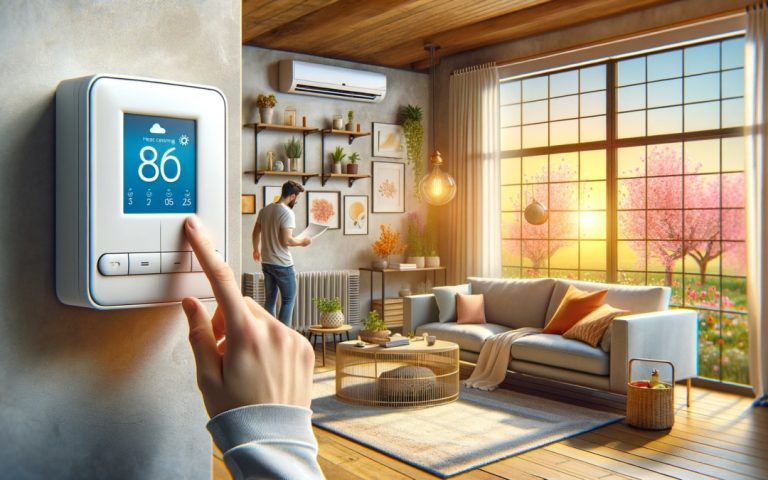Improving your home’s comfort and efficiency has never been more accessible, especially when it comes to cooling systems and thermostats. In today’s age of smart technology and sustainable living, upgrading your cooling methods and thermostat setup can transform not only the atmosphere of your home but also its energy footprint. Whether you’re looking to stay cool during sweltering summer months or simply want more control over your environment, the right approach to climate control can elevate your living space in more ways than one.
The cornerstone of home cooling is, unsurprisingly, the air conditioning system. Yet, many homeowners still rely on outdated units that consume excessive electricity and offer limited control. One of the most impactful steps you can take is to evaluate your current cooling system’s efficiency. If your AC is more than ten years old, it may be time to consider a modern upgrade. Today’s high-efficiency air conditioners, particularly those with ENERGY STAR certification, use up to 50% less energy than their older counterparts. This results not only in lower utility bills but also a more eco-conscious home.
Central air conditioning remains a popular choice for whole-home cooling, but for smaller spaces or homes without ductwork, ductless mini-split systems offer a sleek and efficient alternative. These systems allow for zoned cooling, which means you can cool only the rooms you use, rather than wasting energy throughout the entire house. This is particularly beneficial in larger homes where certain rooms are unoccupied for long periods.
Another increasingly popular option is evaporative cooling, particularly in dry climates. Also known as swamp coolers, these devices cool air through the evaporation of water, using far less electricity than traditional AC systems. While not suitable for humid regions, they offer an economical and energy-efficient option in arid environments.
Once your cooling system is up to date, the thermostat becomes the next critical component in achieving optimal climate control. Thermostats have evolved dramatically in recent years, and the advent of smart thermostats has redefined what home temperature regulation can look like. A smart thermostat does far more than turn your HVAC system on or off. It learns your habits, adapts to your schedule, and can be controlled remotely from your smartphone. The ability to adjust your home’s temperature while you’re at work, on vacation, or even lying in bed adds a layer of convenience that was once unimaginable.
Beyond convenience, smart thermostats offer substantial energy savings. By automatically reducing energy usage when you’re not home and maximizing efficiency when you are, these devices can significantly reduce monthly bills. Some models even provide detailed energy reports and suggestions for optimizing your settings further. The popular Nest and Ecobee thermostats, for instance, are praised for their user-friendly interfaces and robust data tracking features. Pairing these with voice assistants like Alexa or Google Assistant makes temperature control effortless and even enjoyable.
In addition to installing a smart thermostat, proper thermostat placement is crucial. It should be located away from direct sunlight, drafts, and appliances that emit heat, all of which can give false readings and cause the system to work harder than necessary. If your thermostat is in a less-than-ideal location, consider having it professionally relocated. Even this minor adjustment can improve the accuracy and efficiency of your entire cooling system.
While the technical upgrades are vital, don’t overlook passive cooling strategies to complement your mechanical systems. Simple modifications such as installing ceiling fans, using blackout curtains, or applying reflective window film can reduce indoor temperatures significantly. Landscaping choices also play a role. Planting shade trees near sun-exposed windows or installing pergolas can block harsh sunlight and keep interiors cooler naturally. These enhancements don’t just improve comfort—they can also reduce the strain on your cooling system, extending its lifespan.
Moreover, it’s important to maintain your systems once they’re in place. Air conditioners require regular servicing, including filter replacements, coil cleaning, and refrigerant checks. A well-maintained system not only runs more efficiently but also lasts longer, preventing costly repairs or replacements down the line. Similarly, smart thermostats benefit from occasional software updates to keep their algorithms sharp and their interfaces responsive.
When these elements come together—an efficient cooling system, a strategically placed smart thermostat, and thoughtful home design—you create an environment that is not just cooler, but smarter. It’s about more than just comfort; it’s about taking control of your home’s climate in a way that aligns with your lifestyle and values. Whether your goal is to reduce energy usage, increase comfort, or simply enjoy a higher level of control, modern cooling solutions and smart thermostats make it entirely possible.
In the end, improving your home with better cooling and thermostat solutions is not a one-size-fits-all endeavor. It requires understanding your space, habits, and climate. But with a thoughtful approach and the right tools, you can craft a living environment that is perfectly attuned to your needs, beautifully efficient, and remarkably comfortable year-round.

